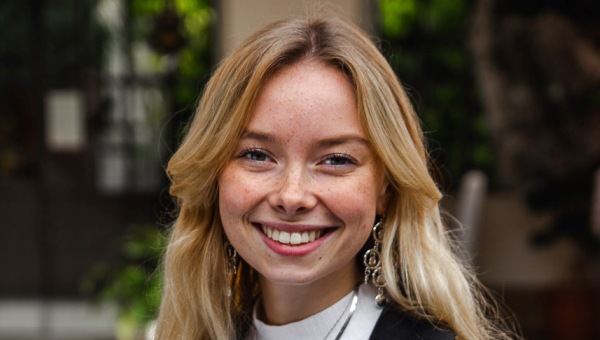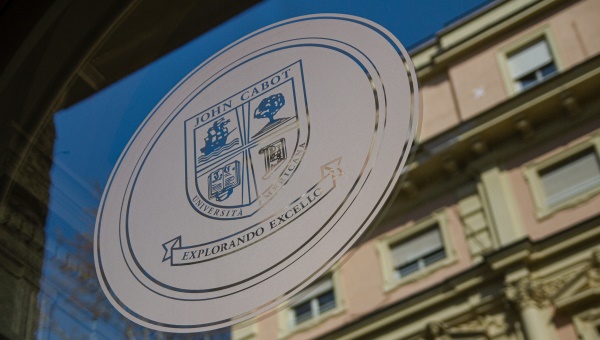Meet MA in Art History Alumna Elena Schembri
Originally from Trapani, Sicily, Elena Schembri graduated from JCU in Spring 2021 with a B.A. in Art History and a double minor in Legal Studies and Political Science. She then enrolled in JCU’s MA in Art History, which she completed in Spring 2024.

How did you find out about JCU’s MA in Art History and what made you decide to apply? How did the program enrich you?
I was already a B.A. student at JCU when I first heard of the MA in Art History program. When Covid-19 happened, I decided that I wanted to continue my experience at JCU in order to make up for all the time my classmates, my professors, and I spent apart. In September 2022 I was able to resume my studies at JCU. The program enriched me mostly because it taught me new methodological approaches. It prepared me as a young scholar who is currently applying to Ph.D. programs.
How did you become passionate about Art History?
Before becoming passionate about Art History, I was passionate about art. As a child, I used to draw and paint almost every day and on any type of surface or object that was available to me. When I was about eight, my mother began collecting books about the most famous artists from the Middle Ages to the Modern era. I remember I became obsessed with Botticelli, Caravaggio, Degas, and Renoir and I knew all the paintings’ titles by heart.
Tell us about your MA thesis.
I wrote my thesis about a series of paintings entitled Demolizioni by 1930s Italian artist Mario Mafai (1902-1965). Contrary to what art critics have so far proposed, in my thesis I argue that Demolizioni did not embody Mafai’s despise and refusal of fascist ideology and policies, like his other works. I argue against the belief that Mafai had always been anti-fascist in favor of a more objective consideration of the artist’s career and works (some canvases and a fresco from the 1930s indeed celebrated fascism). I therefore proceeded to analyze a vast corpus of archival primary sources that showed how Mafai’s Demolizioni were favorably received by art critics back in the 1930s, to demonstrate that the series was not interpreted as a sign of opposition to the regime and should therefore be depoliticized and considered more objectively.
What classes and/or professors had the greatest impact on you and why?
Certainly, Professor Sarah Linford’s class on Italian art from the 20th century was crucial for me, since my thesis was directly developed from a paper I wrote for that course. I was also very passionate about a project I worked on for Professor Lila Yawn’s class on Medieval manuscripts. The project consisted of studying a fragment from a Medieval codex or scroll kept at the Biblioteca Lorenzo Leoni in Todi. I also loved being a T.A. for Professor Inge Hansen in her undergraduate level course Foundations in Ancient Art. I have always admired Professor Hansen’s way of delivering course material and engaging with the class, and I have learned a lot from her. I had to prepare and teach a class myself, and by the end of it I was very proud of how I had handled teaching for one day.
What are your plans for the future?
I am currently applying to several Ph.D. programs in Italy, while working part-time as a gallery assistant at the Galleria Fabio D’Aroma in Rome. I still don’t know what kind of profession I want to undertake in the future, but I believe I am in a period of discovery. I am open to exploring all the options the art world has to offer and trust the process.





